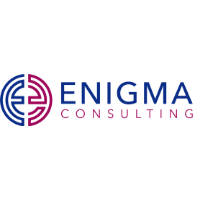Is it time to revisit your bank connectivity solution?
| 29-09-2020 | treasuryXL | Enigma Consulting
A lot of organisations have implemented a corporate payment hub for bank connectivity at the time SEPA was introduced in Europe (2012). Since then the technology has changed drastically and new solutions offer richer functionality at a far more efficient operating model via Software-as-a-Service (SaaS). It is time to revisit your bank connectivity domain!
The usage of Corporate Payment hub solutions for bank connectivity between the corporate ERP/TMS systems and their bank relations is growing strongly. Trends as digitization, standardisation and the increased focus on fraud– and risk management make the automation of the connectivity with banks a topic on the management agenda. There are currently three interesting developments that result in an increased focus on bank connectivity in the Dutch marketplace:
-
The increased focus of being in control by the Corporate treasurer
In the past the Treasurer was merely focused on the high value/low volume treasury payments and not too much looking at the commercial payment flows. From the discussions of Enigma with many corporate treasurers we see an increased focus on being ‘in control’ e.g. reduce manual activities, reduce the number of tokens for Electronic banking systems, have real-time insight in liquidity. The enhanced propositions of TMS systems and network facilitators like SWIFT, further encourages he logical step to automate the bank connectivity. This includes not only the automation of the payment flows but also the receipt and distribution of bank statements internally.
-
New solutions are introduced with a revolutionary operating model
On the solutioning side we see interesting developments as well. New (fintech) vendors like Cobase, OpusCapita or TIS take (multi-tenant) SaaS as starting point reducing the IT footprint and enabling corporates to benefit from developments for other clients as well. Especially on the bank connectivity we see a shift in “tailor made customer demand” to “best-practise solution provider experiences” and therefore leveraging investments done for other clients which are already ‘part of the standard solution’. Some vendors even go further to support the entire bank onboarding ‘as a service’ making life very easy for corporates that do not want to know details about formats, channel options and contacts. Other (as well SaaS) vendors like BELLIN or Serrala focus on the creation of complete ecosystems and partnerships with other solution providers further strengthening the value proposition and relevance.
-
Replacing (legacy) Payment Hub solutions
A third interesting development is that ‘early stage’ payment hub solutions are at the end of their economic life cycle and need to be replaced. With the introduction of SEPA in 2012 a large number of corporates decided to implement a payment hub. Main focus at that time was on reducing the complexity of change to their existing IT landscape. At that time Payment hub solutions especially played a role in:
- File conversion or enrichment capabilities from legacy (domestic in NL Clieop) formats to SEPA formats
- SEPA Direct Debit mandate management to manage the (too complex) ‘first’ versus ‘recurrent’ rulebook guidelines and generation of mandate IDs
- An alternative for ‘bank connectivity’ channels that banks decided to phase out to simplify their SEPA programmes (e.g. ING Finstream channel)
The state of technology at that time was completely different than nowadays. API’s, SaaS or Cloud did not exist. IT deployment method was ‘on-premise’ with a significant IT footprint and initial CAPEX investment.
In the past months Enigma Consulting has had multiple discussions on the necessity to replace these ‘early days’ payment hubs. Our Request-for-Proposal projects have interestingly resulted in a quite positive business case for different reasons:
- Large additional investments (sometimes upgrades) are required in the legacy solutions to improve the IT security or make new business features available. New solutions immediately will eliminate these costs.
- Pricing was high in comparison to current (often shared) solutions with more attractive pricing.
- Some vendors have changed ownership and focus on the payment hub solution is gone (or ambitions at that time have not paid out) whilst new solutions do understand current market drivers and developments in the payment domain. One vendor recently informed their clients that they intend to withdraw entirely from the market.
- New SaaS/Cloud solutions significantly reduce the IT footprint and therefore require far less (often scarce) capacity from IT for maintenance/upgrades.
- Current Payment hub solutions offer a wider range of services and can be integrated far easier (API’s) with other solutions that are as well required (e.g. cash management, fraud, treasury, ERP).
- Many payment hub solutions now offer a full support for ‘on-behalf’ POBO/COBO processing in combination with in-house banking and/or virtual account solutions.
Is bank connectivity a topic on its own?
Not per se. Although the topic itself can perfectly be addressed as single issue we see that our clients link the required change in this domain to a broader discussion on their financial value chain. Often a required change in the bank connectivity domain goes hand-in-hand with broader discussions on the Target Operating Model for payments, incorporating all market developments (outside in), internal ambitions (inside out) and discussion on the bank relation(s) itself. The selection of the best fitting vendor for the payment hub should than be seen in the broader perspective of a mid-term payments roadmap.
So what to do now?
We advise you to (let) revisit the solution you have in place for your bank connectivity. If not automated yet, there might be a strong business case to change this by improving efficiency and reducing risks. If a solution is already in place, there may be arguments to benefit from a replacement by one of the new solutions that offer more for less. You could even look beyond only bank connectivity and look at the entire payments domain to check if you are sufficiently prepared for the future taking into account all market developments in the payment domain.
Contact
Are you interested in how we can help you with your bank connectivity challenge or do you want to understand how we can support you with your Payment Roadmap?
Just contact me on: [email protected] or look at http://www.enigmaconsulting.nl













